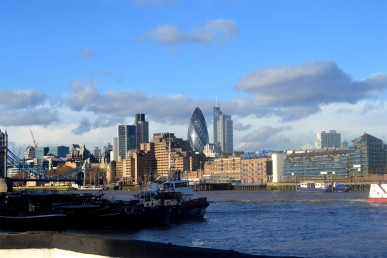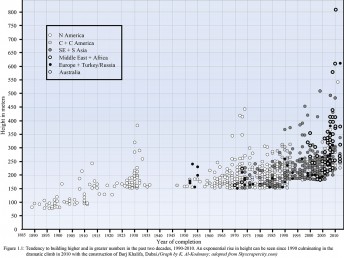Vital skyscrapers need better planning, experts say
Cities around the world need ever-taller buildings as their populations grow and their infrastructures age, but most tall buildings are designed with too little regard for their urban contexts, according to a new book by an urban planner/designer at the University of Illinois at Chicago and an architecture professor at the University of Illinois at Urbana-Champaign.
Four years of world travel, research and documentation of tall buildings went into “The Future of the City: Tall Buildings and Urban Design” (WIT Press). In this large-format, 460-page book, Kheir Al-Kodmany, UIC associate professor of urban planning, and M. M. Ali, UIUC professor of architecture, balance skyscraper aesthetics with responsible urban planning.
The book includes 500 photographs and detail sketches (images are available for download). Most are by Al-Kodmany, a former designer with Skidmore, Owings & Merrill, the architecture firm known for skyscrapers like Chicago’s John Hancock Center and Willis Tower.
Al-Kodmany traveled to 25 cities on five continents to present a global view of aging cities, their needs for new housing and workspaces, and how tall buildings may be worked into the urban fabric to accommodate those needs.
He says urban design should inform skyscraper design in both aesthetic and practical aspects, including a sense of place, human scale, and impact on the skyline as well as the more obvious concerns of congestion and energy use.
“Tall buildings come with problems. They’re expensive to build and offer quality living only with high maintenance. Their density causes transportation problems,” Al-Kodmany says.
“They’ll be hard to dismantle and recycle. We haven’t dismantled one yet. We’re waiting to see what happens, greening buildings for now.”
The authors devote a chapter to the pros and cons of “urban branding” through extremely tall skyscrapers with unique, iconic curvilinear shapes.
“A city is reduced to an object, and the form becomes the end,” Al-Kodmany says.
Technologies like virtual reality and 3-D modeling facilitate such extreme designs, but they also combine with geographic information systems to clarify practical concerns such as how a building will affect wind forces, seasonal shade, traffic patterns and more. Al-Kodmany, who is working on a book about design technologies, used them to produce the sketches that illustrate the design of the photographed buildings.
The onus lies on planners and architects to make policymakers understand the consequences of tall buildings and the need to design them responsibly, the authors write.
Ali was studying the need for skyscrapers in the island nation of Malta five years ago when the government of Amman, Jordan, contacted him to request a similar study. Ali, author of four previous books on architecture, saw the need for an expansive book designed for easy reference by practitioners.
“I realized that this is a worldwide topic,” he said. “There are no clear guidelines for urban design with respect to tall buildings.”


